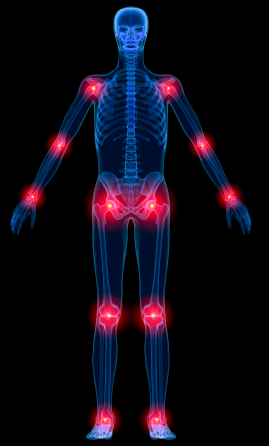Maria Hedman-Lagerlöf CREDIT Andreas Beronius
A recent study led by researchers at Karolinska Institutet found that there are no significant differences between exposure-based CBT and traditional CBT when it comes to treating fibromyalgia. Both forms of treatment resulted in a noticeable reduction in symptoms for people affected by the disease. This study, published in the journal PAIN, is one of the largest to date to compare different treatment options for fibromyalgia.
Approximately 200,000 people in Sweden are currently living with fibromyalgia, a long-term pain syndrome that causes widespread pain, fatigue, and stiffness in the body, resulting in significant suffering for patients. There is currently no cure for fibromyalgia, and existing drugs often provide inadequate relief, highlighting the need for more effective treatment methods. While cognitive behavioural therapy (CBT) has shown some effectiveness, there is a shortage of trained CBT practitioners and a lack of knowledge about which CBT methods are most effective.
The study compared two different forms of internet-delivered cognitive behavioural therapy in terms of how effectively they reduce the symptoms and functional impact of fibromyalgia.
In short, exposure-based CBT entails the participant systematically and repeatedly confronting situations, activities, and stimuli that the patient has previously avoided due to the association with pain, psychological discomfort, or symptoms such as fatigue and cognitive problems.
In traditional CBT, participants are presented with various strategies to work on during treatment, such as relaxation techniques, activity planning, physical exercise, and methods for managing negative thoughts and improving sleep.
The study showed that traditional CBT was, in general, equivalent to the newer treatment form of exposure-based CBT.
“Despite our hypothesis, our study shows that the traditional form can be equally effective,” says Maria Hedman-Lagerlöf, psychologist and researcher at Karolinska Institutet.
The randomized study involved 274 people with fibromyalgia, who were randomly assigned to be treated with traditional or exposure-based CBT. The treatments were delivered online, and all participants had regular contact with their therapist.
Participants were asked to answer questions about their mood and symptoms before, during, and after treatment. Following the 10-week treatment, 60 percent of those who received exposure-based CBT and 59 percent of those who received traditional CBT reported that the treatment had helped them.
“The fact that both treatments were associated with a significant reduction in the participants’ symptoms and functional impairment and that the effects were sustained for 12 months after completion of the treatment, indicates that the internet, as a treatment format, can be of great clinical benefit for people with fibromyalgia,” says Maria Hedman-Lagerlöf. “This is good news because it enables more people to access treatment.”
The study is the second largest to compare different psychological treatment options for fibromyalgia, according to the researchers.
“Our study is also one of the first to compare with another active, established psychological treatment,” says Maria Hedman-Lagerlöf.



